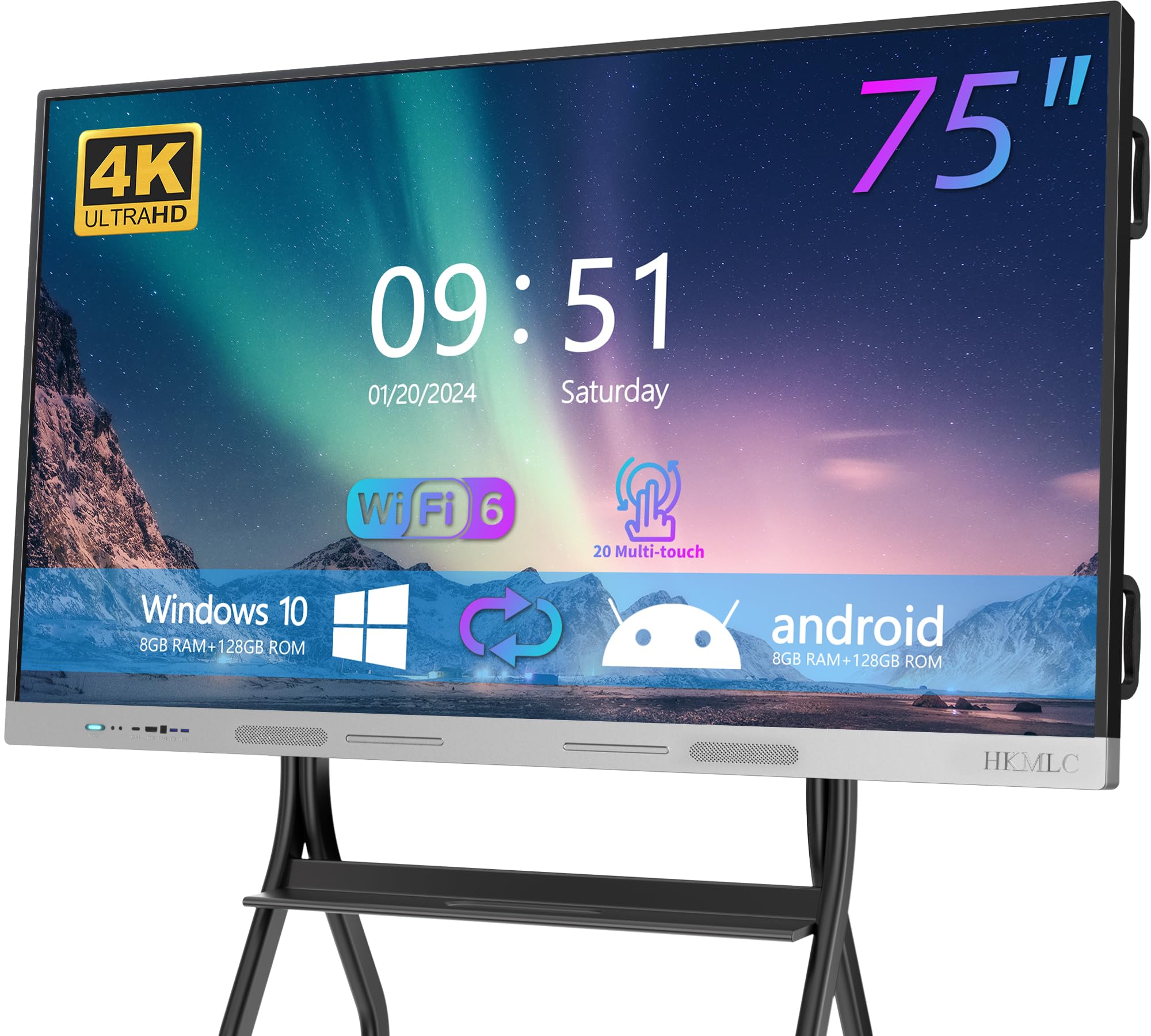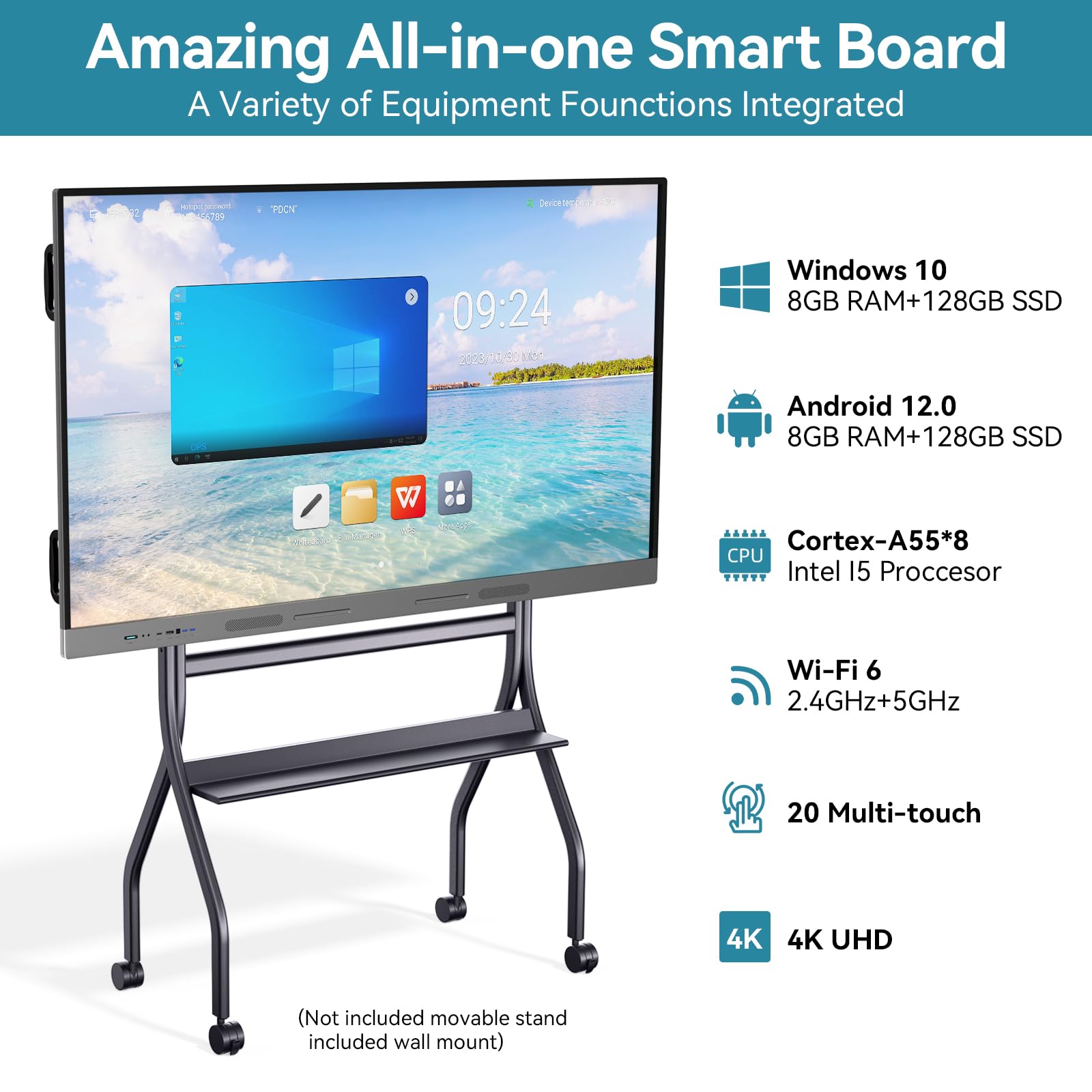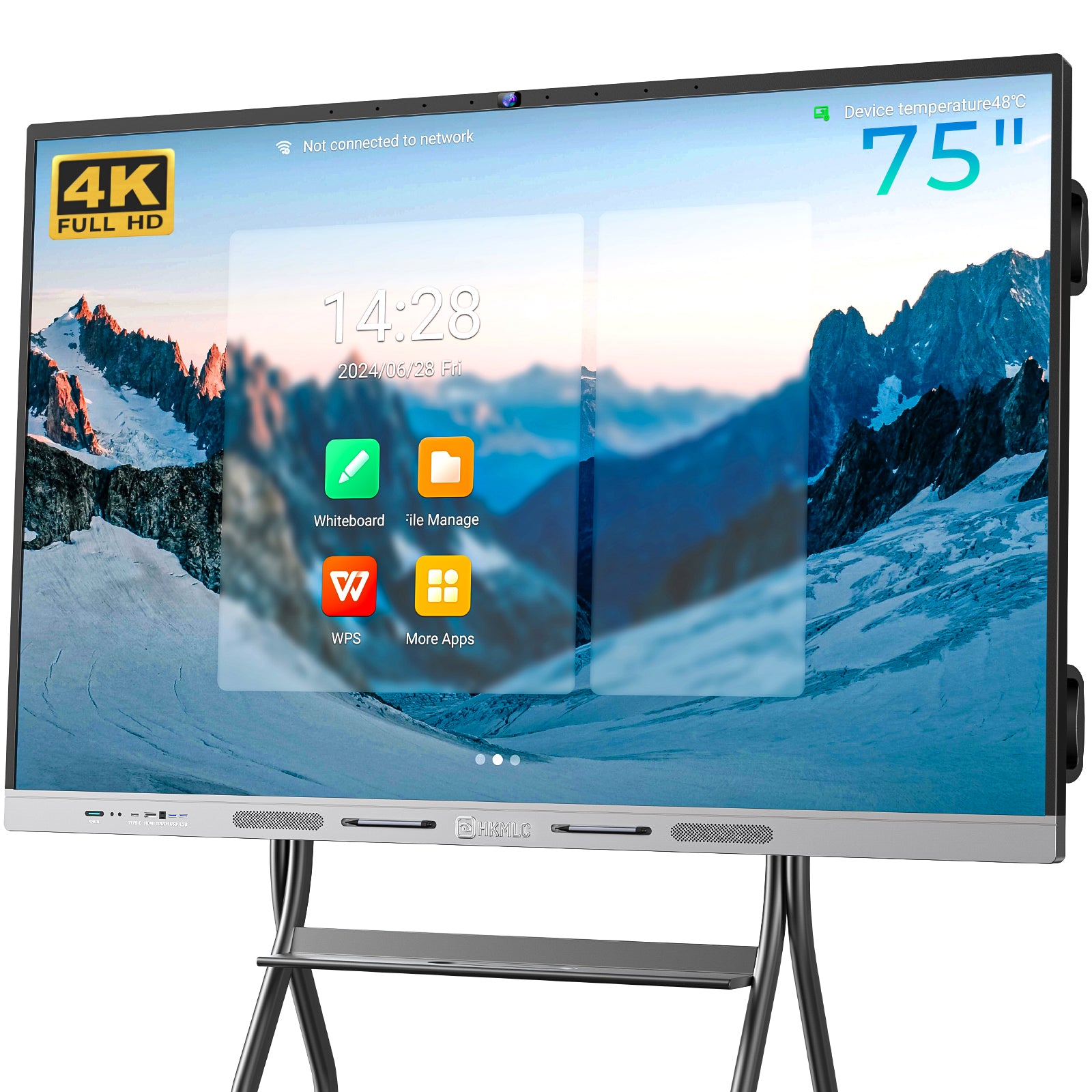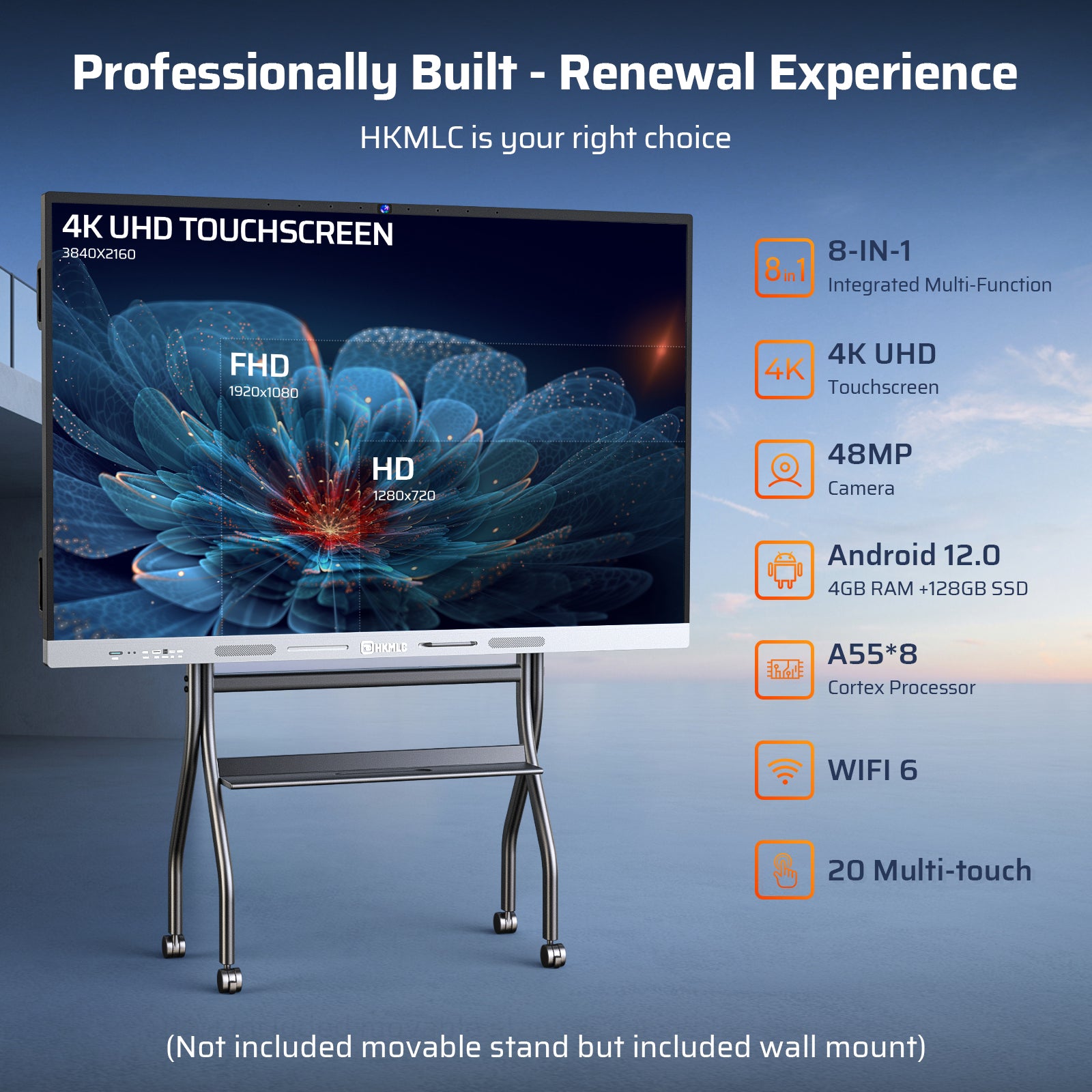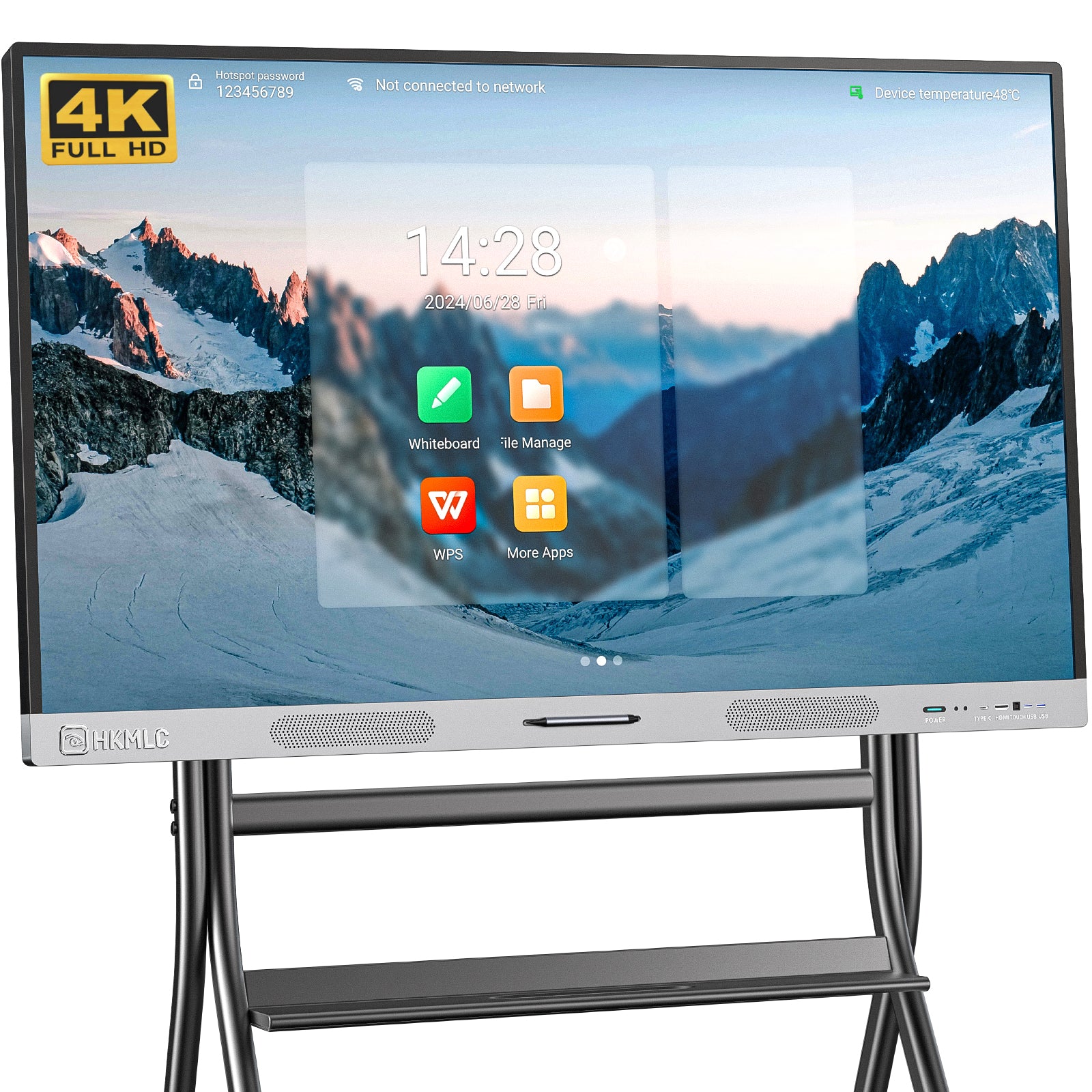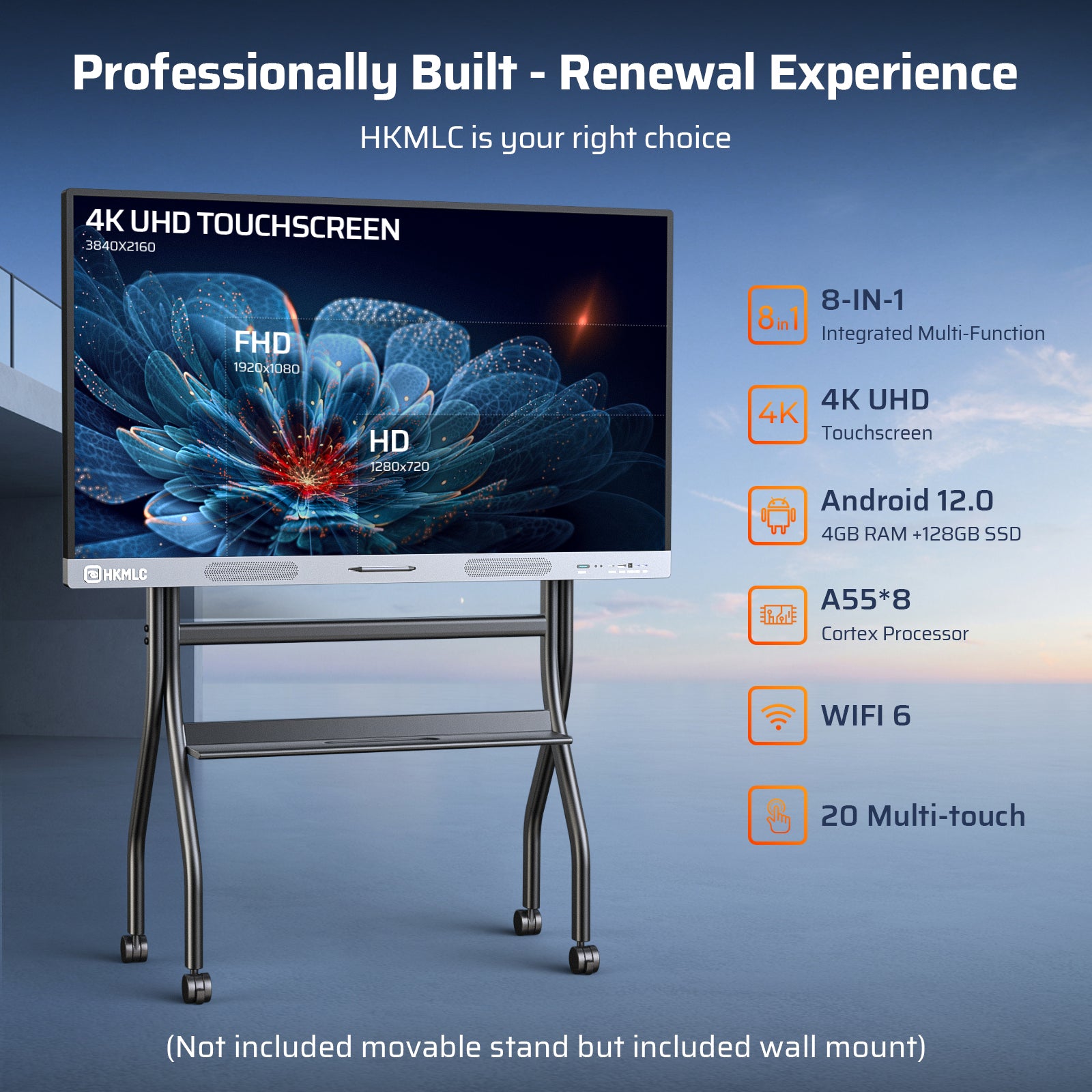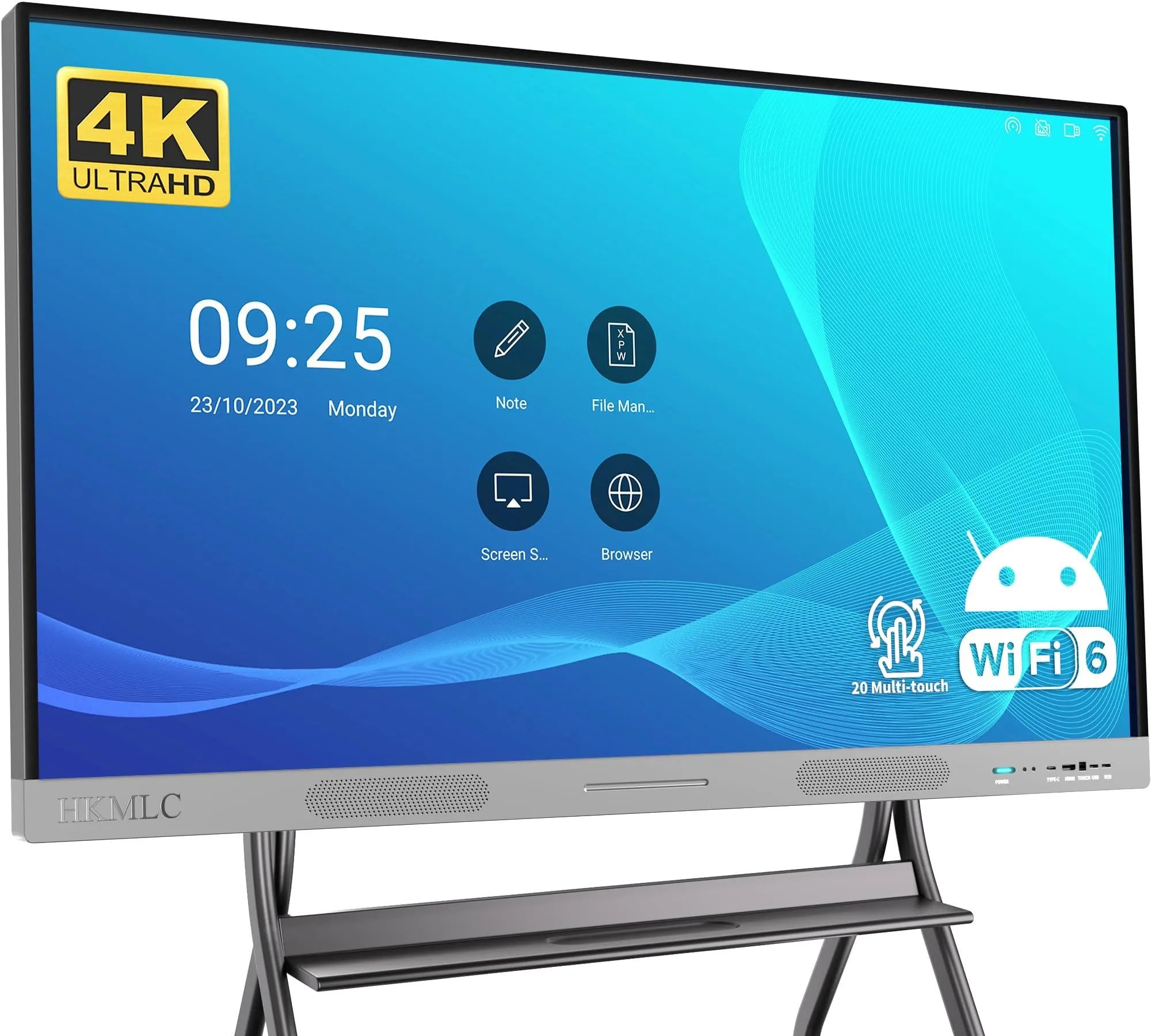What is a Meeting Board?
A Meeting Board, officially known as an "interactive smart board," integrates the functionalities of a computer, television, whiteboard, projector, and sound system into one smart device. It is compatible with various remote meeting software and hardware, as well as office needs. Meeting Boards are commonly used in government agencies, enterprises, educational institutions, and small to medium-sized businesses.
The advent of Meeting Boards has replaced the traditional combination of a computer, projector, and whiteboard, enabling wireless screen sharing, human-computer interaction, remote meetings, and whiteboard writing. This integration significantly enhances office efficiency.
Functions of a Meeting Board
-
Smart Writing
Traditional whiteboards are difficult to clean, whereas Meeting Boards offer high precision and fast response. They provide clear and aesthetically pleasing writing, with features such as one-click erasure and support for multiple users writing simultaneously. Additionally, they allow for changing font colors and include functions like zooming and moving objects, making them flexible and convenient to use.
Smart Screen Sharing
Previously, meetings often required complex connections between a computer and projector, with frequent adjustments and the need to transfer data via USB drives, which was cumbersome. Meeting Boards eliminate the need for various cables. Smart devices such as phones and computers can be connected with a single click for screen sharing. Additionally, they support reverse control and split-screen display, making comparison of solutions more efficient.
-
Video
Using a Meeting Boardremoves geographical limitations for meetings, allowing for face-to-face video communication even if participants are not physically present. It supports simultaneous connections of multiple devices, enabling interaction and screen sharing. You can also make modifications and annotations directly on the screen, facilitating remote collaboration.
The shared whiteboard feature is particularly useful. For example, you can simultaneously video Meeting and edit documents, with both ends syncing the display. This allows issues to be resolved without needing to meet in person, significantly enhancing efficiency.
Scan and Take Away
In the past, during meetings, participants often took photos of key points with their phones, which sometimes led to discrepancies when reviewing later. Transferring files was also inconvenient. Meeting Boards come with a built-in scanning feature, allowing you to capture handwritten notes, annotations, and files. This means you can focus on listening during the meeting without the need to take notes manually.
- Screen
- Screen Material
Screens are typically categorized into LCD and LED types, distinguished by their light sources. LCD screens do not emit light on their own and require an external light source, resulting in natural colors but poor visibility in direct sunlight.LED screens, on the other hand, emit light themselves, offering vibrant colors and wide viewing angles, even in bright sunlight.
In practical use, since screens are often written or drawn on, the hardness of the screen is also important. Most current models use tempered glass for the outer screen, with a hardness rating of around 7 (similar to smartphones). This provides good scratch resistance and durability, ensuring a long lifespan.
- Screen Resolution
Generally, 4K resolution is standard for Meeting Boards. Commercial-grade screens often feature 4K resolution, which is considered ultra-high definition and provides detailed, clear images. With current computers and televisions also starting at 4K, anything less on a large Meeting Boardwould result in a noticeably rough image quality. - Color Gamut
Color gamut refers to the range of colors a device can display. It is usually measured as a percentage, with common models covering about 72% and high-end models reaching up to 90%. A larger color gamut means the device can display a wider range of colors, resulting in more vibrant and saturated visuals.
Screen Aspect Ratio
The 16:9 aspect ratio is commonly used for TV shows, movies, and mid-length videos. Choosing a 16:9 ratio is ideal as it ensures good compatibility and avoids large black bars on the sides when watching videos.
Screen Size
The size of the Meeting Board screen is generally determined by the space where it will be used, such as for meetings or training sessions.
- Touch System
Infrared Touch
Infrared touch technology is one of the most widely used and mature touch solutions. However, it has some drawbacks, including susceptibility to interference from remote controls and slight delay in response. Infrared screens typically offer a color gamut of 72%-90%, providing decent image quality.
Capacitive Touch
Capacitive touchscreens work by detecting the microcurrent from the human body, allowing for multi-touch capability. They offer responsive performance, smooth writing, and effective prevention of accidental touches. Capacitive screens generally have a color gamut of 100%, providing vibrant and full-color displays.
Electromagnetic Touch
Electromagnetic touchscreens are known for their high sensitivity and precision but come with certain limitations, such as the need for an electromagnetic pen. They are often more expensive compared to other touch technologies.
CPU and Storage
CPU
Android devices typically use quad-core, hexa-core, or octa-core processors. However, these processors cannot be compared to Intel Core processors, as they operate at different levels of performance. For Android devices, a minimum of 3GB of RAM is recommended, while Intel Core processors should have at least 8GB of RAM. Weak CPUs may struggle with multitasking, leading to slowdowns or performance issues when many programs are running simultaneously.
Storage
The more storage space, the better. Larger storage capacities allow for more applications, files, and data to be saved without running into space limitations.
Operating System
- Meeting Boards mainly offer two operating systems: Windows and Android. Android devices function like large tablets, while Windows devices operate as full computers. Windows generally provides a better ecosystem and stronger performance, making it suitable for a wider range of use cases. It can be used with OPS modules for additional functionality, so it is recommended to prioritize Windows-based options.
- Array: Refers to the number of microphones, which can be 4, 6, 8, or 12. More microphones allow for capturing sound from different positions.
- Pickup Distance: A pickup distance of 6-8 meters is sufficient for small Meeting For larger rooms, consider adding an "omnidirectional microphone."
- Smart Noise Reduction: Requires software algorithms to filter out unnecessary noise during video Meetings, such as whispers or phone ringtones. Optimal performance depends on both hardware and software tuning. Just like in smartphones, where Apple might have fewer pixels but better photo quality due to optimized software and hardware, Meetingsystems benefit from integrated solutions.
- Meeting Boards offer various camera resolutions, such as 800W, 1200W, or 4800W pixels, with options for built-in or external cameras. External cameras are simpler and less expensive, but high-quality manufacturers provide built-in cameras with software and hardware optimizations. For example, Huawei cameras include image tracking features to automatically frame participants in a meeting.
- Speakers: Opt for stereo speakers for fuller sound.
- Projection Options: Should support screen mirroring from computers, phones, and projectors.
- Ports: Look for a variety of ports such as USB, HDMI, TOUCH, and AUDIO.








